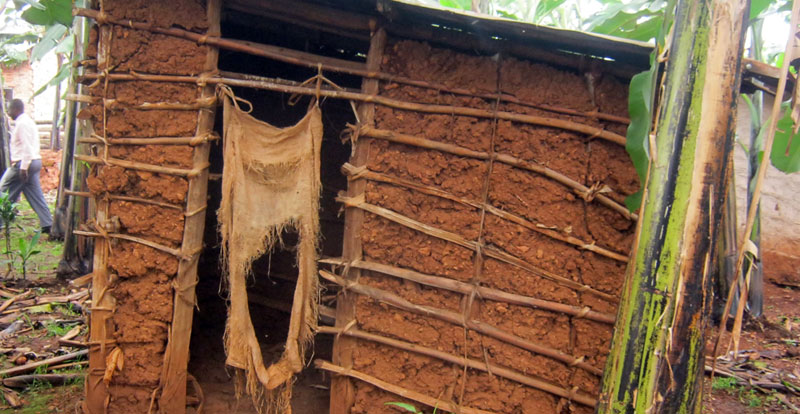human traffickingFeatures
Why pit latrines persist despite being illegal
The International Symposium on Water and Sanitation held in Kampala recently will be remembered for raising the awareness about the growing risk of water born diseases especially in urban centres across Uganda arising from the continued use of pit latrines.
But the conference will also be recalled for exposing the continued failure by the National Water and Sewerage Corporation (NWSC) to extend sanitation services to meet the growing demand by the public.
The sad state of affairs is made even more worrying by revelations by health experts that the continued digging and use of pit latrines in Kampala and neighboring urban centres is a major cause of water born diseases such as cholera.
Engineer Jude Byansi, the Head of the Directorate of Water and Sanitation at KCCA says that more than 50 percent of homes across Kampala’s five municipalities use pit latrines. This is in contravention of the 1964 Law that prohibits the use of pit latrines in municipalities across the country.
“That law demands that before any urban centre is granted municipality status, it should show proof of elimination of pit latrines within its entire domain,” Byansi states.
Byansi explains that pit latrines are the biggest source of contamination of water sources accessible to the majority of Kampalans especially among the urban poor.
The commonest water sources within Kampala City include gravity water, spring water, surface water, and protected wells among others.
“It is important for people living within the five Divisions of Kampala to desist from using pit latrines as part of our efforts to stem the growing risk of water-borne diseases in the City. ” Byansi says.
No Toilets nor latrines for a whooping 2% of Kampalans
According to records from KCCA, 2% of Kampalans don’t have access to either toilets or latrines and therefore use Kaveera for disposing faeces.
He however notes that while 98% are recorded to have access to sanitation services, only 35% have access to improved toilets, a reality he attributes to the fact that some Kampalans especially those in flood prone areas such as Bwaise build their pit latrines in a manner that enables them to empty filth into water channels or running water during heavy down powers.
National Water and Sewerage Corporation (NWSC) who are mandated to provide water sewerage services across the country say they’ve tried their best to provide safe water to more than 70 percent of all urban areas in the country. However, resource constraints still keep majority of Uganda’s population out of reach of sanitation services.
NWSC publicist Sam Apedel told The Sunrise that while homesteads in Kampala’s business District enjoy 100% sewer coverage only 10% of Uganda’s homesteads are connected to piped sewerage.
He notes that because of the high costs of establishing running sewer lines, they are currently unable to provide those services to the users as demanded by the law. Instead however, NWSC has been trying to promote onsite sewerage services by providing sewerage trucks to congested areas such as slums.
“What we can emphasize at the moment is a dual approach combining both the on site sewerage systems and piped sewerage depending on our current resource envelop.” Apedel noted
But despite NWSC shortcomings, some people have come out to call for its urgent implantation to force home owners to develop on-site sewerage than latrines.
What they say
Specioza Wamala, the LC 1 Chairperson of Namasuba Lufuka zone in Makindye Division is one of those calling for an urgent implantation of the law.
“How I wish every person living in Kampala could get a flush toilet in their homes if it were not for the prevailing low living standards especially for those Ugandans living in Kampala’s suburbs it should have been mandatory,” Wamala says.
“It is not any wonder that many Ugandans build their septic tanks (emulating pit latrine owners) in such positions they regularly manipulate to empty sewage into roads each time it threatens to rain,” Wamala adds.
But she warns that eliminating pit latrines threatens to be a hard fought battle unless those concerned thoroughly sensitize the people.
Hajji Sulaiman Kalule the Kazo Angola LC1 Chairman and a Civil engineer with Mahaba Contractors argues that implementing such a law tantamounts to threatening his village with closure as very few of his residents can afford to do away with pit latrines.
“Hardly ten homesteads in our entire village are using flush toilets at the moment and that is not about to change if government does not come in to assist us,” Kalule says.
Kalule advises KCCA to work hand in hand with NWSC to extend their sewer lines to Villages in Kampala’s suburbs “before they think of even implementing such a law.”
Comments





















